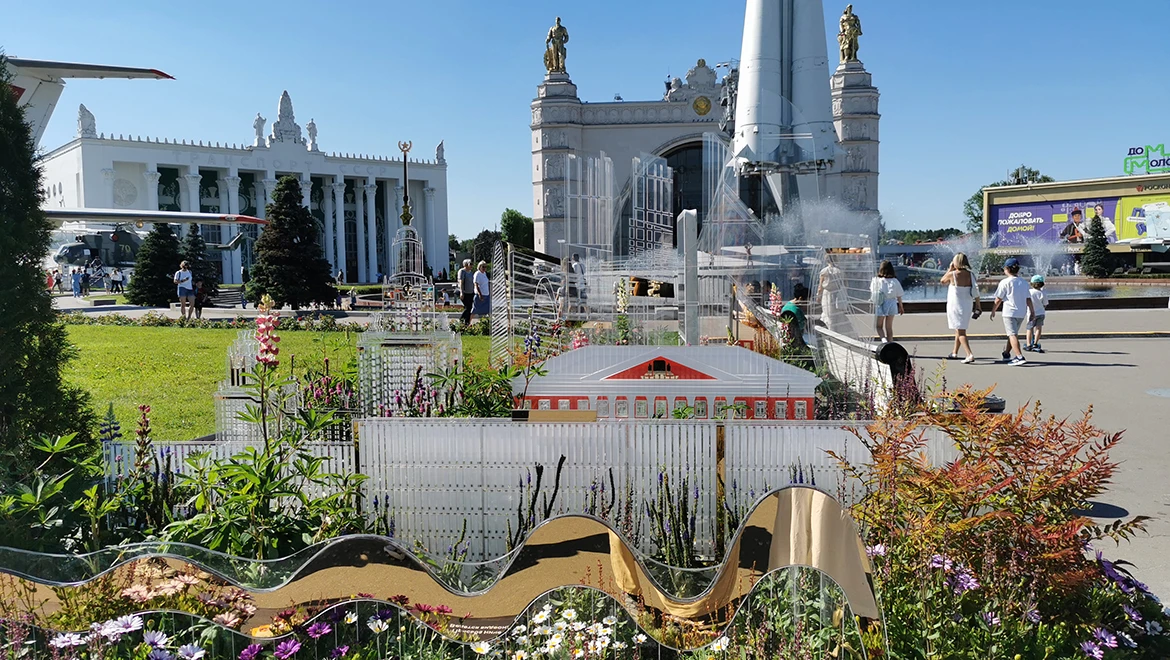Narrow-leaf fireweed (Ivan-chai). Tyumen region
Narrow-leaf
fireweed (Chamaenerion angustifolium (L.) Scop.) known in Russia as Ivan-chai
(lit. Ivan-tea) is a perennial herbaceous plant, the type species of the genus
Chamaenerion, belonging to the family Onagraceae. It is often considered part
of the genus Epilobium. Commonly known as "Koporye tea" and
"field tea," in Russia, it has been used to produce tea as a
substitute for expensive Chinese tea since the XVIII century.
Fireweed is
widespread throughout the Northern Hemisphere, especially in the forest zone of
Siberia, where it is one of the main honey plants. In the Tyumen region, it
grows in the Tobolsk district and the Antipino area. Look for Ivan-chai on
forest edges, ravine slopes, and riverbanks. This plant can quickly cover large
areas in clearings and burnt-out areas due to its rapid vegetative
reproduction, which helps restore soil fertility. Due to its ability to grow in
fire-damaged areas, it is also called fire herb, garevik, pozharnik in Russia.
Legend has
it that fireweed has a cosmic origin. The goddess Kupala sailed across the
night sky in a silver boat and scattered seeds of medicinal plants to heal
people. The fireweed seeds were the first to sprout, glowing with their fiery
pink color in the night. This legend reflects the plant's nocturnal nature; its
flowers do not close at night but turn towards the moon, absorbing its energy.
Interestingly, fireweed is primarily pollinated by nocturnal moths.
The plant
contains a significant amount of tannins, plant fibers, sugars, vitamin C,
pectin, and trace elements. It is an important forage plant for both wild
animals and domestic reindeer. The flowers are a source of nectar. Young leaves
are used in salads and soups, and the starchy, sweet-tasting rhizomes were once
used as food, dried, ground, and added to flour for baking bread.
Ivan-chai
is widely used in traditional medicine for its calming effect on the central
nervous system. Its leaves and flowers are part of many medicinal teas. Its
beneficial properties include boosting the immune system, improving metabolism,
detoxifying the body, normalizing cardiovascular function, stabilizing blood
pressure, anti-inflammatory effects, increasing work capacity, restoring
strength after prolonged physical and mental exertion, normalizing digestion,
and anticancer properties. In tsarist Russia, it was known as the peasant's
tea, consumed to restore the body after hard fieldwork.
Today, the
production of Ivan-tea is experiencing a revival in Russia, with the Tyumen
region being one of the first to start production. The regional and municipal
authorities are ready to provide free agricultural land for growing raw
materials and developing tea production.
Ivan-tea production has significant potential for industrial development in the Tyumen region. Market players link this potential to the initiative of recognizing Ivan-chai as an agricultural crop, which is currently being developed by the Ministry of Agriculture of Russia. Companies facing investment challenges hope to benefit from government support in the future, allowing them to produce more high-quality, healthy products, create new jobs, and develop technologies.
One of the
largest Ivan-tea producers in Tyumen uses domestic equipment and local raw
materials, with Ivan-chai harvested from plantations in the Tyumen district. A
key piece of equipment is a drying machine, assembled in Tyumen, which, thanks
to its unique design, reduces the drying time of leaves from five hours to five
minutes while preserving all beneficial substances. The plant produces 10 to 20
tons of Ivan-tea annually, supplying many regions of the country. Tyumen
Ivan-tea is also actively promoted in Asian and European markets, particularly
in Germany and Thailand.
In the
Goloshmanovsky district of the Tyumen region, the Siberian Tea Festival is
held, where everyone can choose tea to their taste, including Ivan-tea. The
stunning fields of blooming fireweed are popular among residents of the region
for photo sessions.
Along with the RUSSIA EXPO, the flower festival is also coming to an end.
The "Future in Flowers" festival continues at the RUSSIA EXPO, where unique flowerbeds from all regions of our country can be seen at the "Space" pavilion until July 8.
The RUSSIA EXPO concludes on July 8, and with it, the flower festival will also come to an end.





